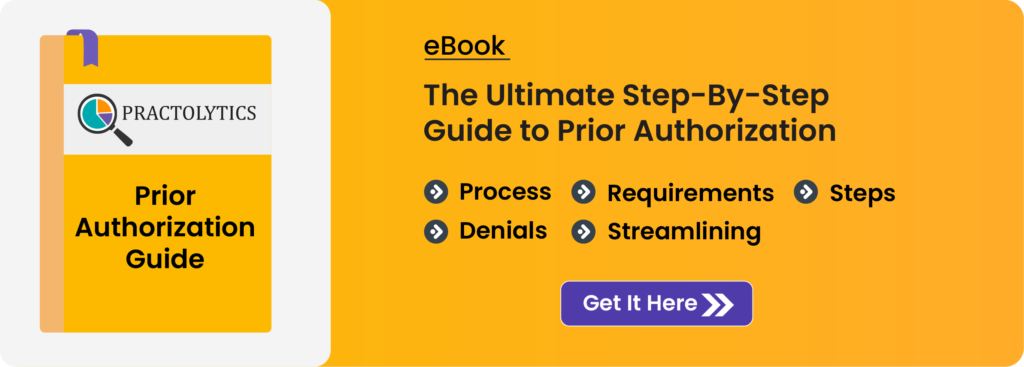How Long Does Medical Credentialing Take?
Every healthcare professional or practice must obtain insurance payer credentialing in order to be able to treat a broad patient base and receive reimbursement. It is also a legal necessity. However, the procedure is notoriously slow and opaque. “How long does medical credentialing take?” is one of the most inquiried one. Unfortunately, it is rarely possible to find a simple answer that works for everyone.
The credentialing process could take weeks or few months, and in complex situations, it can take a year. Minimizing revenue disruption and improving patient access require an understanding of the many processes needed, the many factors affecting the schedule, and ways to speed up the process.
Table of Contents
What Exactly Is Credentialing?
Fundamentally, credentialing is the extensive procedure that insurance companies and healthcare organisations use to confirm a provider’s training, experience, and professional competence. Verifying their training, education, board certification, license, employment history, malpractice history, and adherence to professional standards are all part of this. Its major objective is to ensure patient safety and to meet regulatory and certification criteria.
Once certified, a provider can then undergo “payer enrollment,” which is the process of legally asking to join specific insurance networks to earn reimbursement for services delivered to their beneficiaries. In practice, the phrases are frequently used interchangeably since they are linked, even though credentialing is virtually always a requirement for payer enrollment.
Stages of the Credentialing Marathon
The credentialing process is not a single event but a multi-stage marathon involving multiple parties. Understanding each phase helps explain why it can take so long:
- It is the provider’s duty to prepare the application in advance. This preparation includes gathering all required documentation, such as medical licenses, DEA registration, Type 1 and 2 NPI numbers, malpractice insurance certificates, board certifications, diplomas, residency/fellowship certificates, continuing medical education, references, and a thorough work history. This can take a lot of time if the documents aren’t easily arranged.
- Profile Management for CAQH ProView: ProView is a worldwide online database that allows providers to keep and update their credentialing data in a single, central location. It is maintained by the CAQH. Many payers pull data directly from CAQH. It is important to have your CAQH accurate, thorough, and routinely attested. An outdated or incomplete profile can cause significant delays.
- Application Submission (to Payers/Facilities): Once all information is gathered, specific applications are submitted to each individual insurance payer network or healthcare facility the provider wishes to join. The length and complexity of these applications vary widely. Some payers utilize the CAQH data, while others require their own proprietary forms.
- Primary Source Verification (PSV): This is often the longest and most critical part of the process. The payer’s credentialing team (or a Credentialing Verification Organization – CVO) directly contacts the original sources to verify every piece of information provided by the practitioner. This includes:
- Confirming medical school and residency program completion directly with the institutions.
- Verifying licensure status with state medical boards.
- Checking board certification with specialty boards.
- Contacting previous employers for work history and performance.
- Looking for any negative actions, sanctions, or malpractice history in national databases such as SAM.gov, the National Practitioner Data Bank (NPDB), and the OIG exclusion list.
- Verifying DEA and controlled substance licenses.
- Internal Payer/Facility Review: Following PSV, the credentialing committee of the payer or facility examines the validated data internally. There may be waiting periods because these committees frequently have defined meeting times (such as monthly or bi-weekly). The committee evaluates the provider’s qualifications against their internal standards.
- Payer Enrollment & Contracting: The provider is officially enrolled in the payer’s network after receiving committee approval. This frequently entails negotiating and signing contracts. The provider can’t start invoicing for in-network services until the contract is fully implemented. Payment depends on when the contract goes into force.
Factors That Play a Role in the Timeline
While the average credentialing process can take anywhere from 90 to 150 days for initial credentialing, and sometimes even longer, several factors can significantly shorten or extend this timeframe:
Provider-Related Factors:
- Application Completeness and Accuracy: The single biggest cause of delays. Missing information, inconsistencies, or errors mean the application will be returned, restarting or significantly pausing the clock.
- Responsiveness: The speed at which the provider (or their credentialing team) answers payers’ or CVOs’ requests for more details.
- Job History Complexity/Gaps: Long job histories, several previous locales, or inexplicable gaps may necessitate more thorough verification and lengthen the schedule.
- Adverse past: A more thorough assessment and a much longer process will be triggered by any malpractice claims, disciplinary actions, or criminal past.
- Specialty: Some highly specialized fields or those with unique regulatory requirements might experience longer waits.
Payer-Related Factors:
- Payer Size and Backlog: Larger payers with high volumes of applications may have longer processing queues.
- Internal Efficiency: The payer’s own internal processes, staffing, and committee meeting schedules greatly influence speed.
- Specific Requirements: Some payers have more stringent or unique requirements than others.
- Communication: How effectively and frequently the payer communicates status updates.
External Factors:
- Primary Source Responsiveness: The time it takes for colleges, residency programs, former employers, or state licensing authorities to reply to requests for verification.
- CAQH Attestation: Payers will demand the provider to update and authenticate their CAQH profile every 120 days if it isn’t already, which will cause a delay.
- State-Specific Regulations: Variations in state laws can impact how certain verification steps are performed.
- Time of Year: Peak seasons or holiday periods can slow down processing across the board.
Estimated Timelines by Entity (General Guidelines)
- Medicare: Often one of the quicker processes, potentially 45-90 days, though it can vary. In order to allow for back-billing, the effective date of enrollment is usually the day the application was received.
- Medicaid: Varies significantly by state, typically 45-90 days, but can be longer.
- Commercial Payers (e.g., Aetna, Cigna, Humana, UnitedHealthcare, BCBS): Typically 90-120 days for the credentialing verification and committee approval, followed by another 30 days for contracting. Usually, 90 to 150 days per plan is a safe estimate.
- Hospitals/Facilities: Generally 60-120 days for granting privileges.
- Re-credentialing: Usually takes 60 to 90 days less than initial credentialing because much of the information is already on file but still needs to be addressed.
Strategies to Expedite the Process
Even if you can’t control everything, taking proactive steps will greatly cut down on the time and irritation associated with credentialing:
- Start Early: Begin the credentialing process well in advance of a new provider’s start date or a practice’s opening. Aim for 4-6 months ahead.
- Master CAQH: Ensure that your CAQH ProView profile is updated and attested every 120 days. For many payers, this is the most crucial stage of all.
- Organize Documents: Have all required licenses, certifications, diplomas, insurance certificates, and historical data organized and readily accessible. Create a digital ‘credentialing folder’ for each provider.
- Accuracy is Key: Double-check every field on every application for accuracy and consistency. Any discrepancy can cause a hold-up.
- Quick Reactions: Provide prompt answers to payers, CVOs, or primary sources requesting more information. Delays here are entirely within your control.
- Proactive Follow-Up: Don’t just submit and wait. Follow up with payers and primary sources regularly (e.g., weekly or bi-weekly) to check status and nudge along any stalled verifications. Document every call.
- Leverage Technology: Utilize credentialing software or RCM platforms that can automate parts of the process, track applications, and provide alerts for expirations or missing data.
- Consider Professional Services: For complex cases, new practices, or those with limited internal resources, partnering with a professional credentialing service or RCM company can be invaluable. They have the expertise, relationships, and systems to navigate the complexities more efficiently.
Conclusion:
One of the most important administrative problems in the healthcare industry is highlighted by the query, “How long does credentialing take?” A thorough grasp of the procedure, a dedication to careful data management, and the implementation of proactive tactics can greatly minimize delays, even though the timescales can be enormous and uncertain.
In order to maintain patient care and a steady flow of income for your firm, credentialing is more than just paperwork. You may make sure your providers are prepared to treat patients and bill for their critical services without needless delays by putting in the time and effort up front or by using the experience of a committed credentialing partner.
For medical professionals looking to join insurance networks and get paid, credentialing is an essential but frequently time-consuming procedure. From document preparation and CAQH profile maintenance to payer enrollment and primary source verification, this blog deconstructs the multi-stage process and explains why timescales might vary from ninety days to more than a year. In addition to outlining doable tactics to speed up the process—like early initiation, correct documentation, timely responses, and utilizing technology—it examines provider, payer, and external factors that affect the duration. In order to minimize revenue delays and guarantee patient access, it is crucial to comprehend and effectively navigate the credentialing landscape, regardless of whether you are a new provider or growing a practice. The road to reimbursement and operational success might be streamlined by spending money on appropriate planning or expert credentialing services.
Read More – Prior Authorization for MRI
Talk to Medical Billing Expert Today — Get a Free Demo Now!






